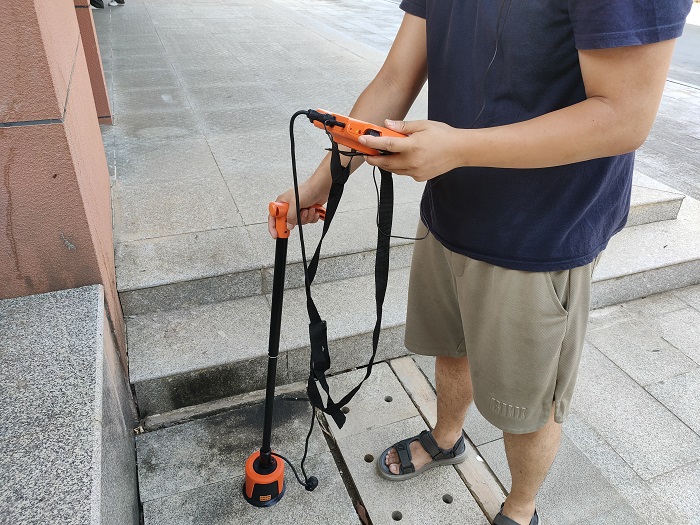In modern society, the underground water pipe system, as an important component of urban infrastructure, undertakes important functions such as transporting domestic water, industrial water, and drainage. However, due to various reasons such as pipeline aging, construction quality issues, and natural factors, underground water pipe leakage problems occur from time to time, which not only wastes valuable water resources but may also have serious impacts on the ecological environment and residents' lives. In order to effectively address this issue, technology personnel have developed various pipeline leak detectors, which play an important role in protecting water resources and maintaining urban infrastructure security.

1、 Acoustic water leakage detector
The sonic leak detector is currently one of the most common underground water pipe leak detection devices. It is based on the principle of sound propagation and detects the noise generated when water flows through the pipe wall by placing a high-sensitivity probe next to the pipe. When water flows inside the pipeline, the frictional force between water molecules will produce a certain amount of noise. Once a leak occurs in the pipeline, the noise will significantly increase due to pressure changes and an increase in water flow velocity, which will be captured by the sonic leak detector. This method does not require opening pipelines or excavating the ground, and can quickly locate leaks, making it efficient and convenient.
2、 Thermal imaging camera
Thermal imaging cameras are another advanced tool for detecting underground water pipe leaks. It uses infrared radiation to detect the temperature distribution on the surface of objects, and detects leakage points by capturing small changes in the ambient temperature around the leakage point. Due to water leakage causing an increase in ambient temperature around the pipeline, thermal imaging cameras can clearly display the temperature difference between the leakage point and other areas at night or in low light conditions, thereby accurately identifying the location of the leakage. This method is particularly suitable for pipeline areas that are difficult to directly observe or access.
3、 Detecting cable and buried pipe leakage detector
Detection cable is a special type of cable that can be laid underground and connected to a detection instrument to detect the real-time water flow status inside the pipeline. When there is water flowing inside the pipeline, electric field changes will be generated around the detection cable. The detection instrument can capture these electrical signals and determine the location of water leakage through calculation and analysis. This method has high positioning accuracy, but requires the laying of additional cables, which increases construction costs. The buried pipe leakage detector is a detection device directly placed above or near the pipeline, which determines whether there is leakage by detecting signals such as vibration and sound around the pipeline. It has the characteristics of easy operation and high efficiency.
4、 Challenges and Solutions Faced
Although these pipeline leak detectors have achieved significant results in practical applications, they also face some challenges. For example, environmental noise interference may affect the detection results of acoustic leak detectors; Underground temperature changes may cause thermal imaging cameras to misjudge the location of water leakage points; And the detection cable may be affected by interference from surrounding electronic devices. In order to overcome these challenges, technology personnel are constantly developing new technologies and methods, such as using filters and noise reduction algorithms to reduce the impact of environmental noise, combining ground temperature monitoring and meteorological forecasting to improve the positioning accuracy of thermal imaging cameras, using multiple detection cables and combining signals to reduce electric field interference, etc.
5、 Conclusion
Pipeline leak detector is an important tool for ensuring urban water supply safety and conserving water resources. With the continuous advancement of technology and the continuous promotion of applications, these instruments will become more intelligent and efficient, providing strong support for the maintenance and management of urban infrastructure. In the future, we look forward to the emergence of more innovative technologies to bring more breakthroughs and progress to the field of underground water pipe leakage detection.








